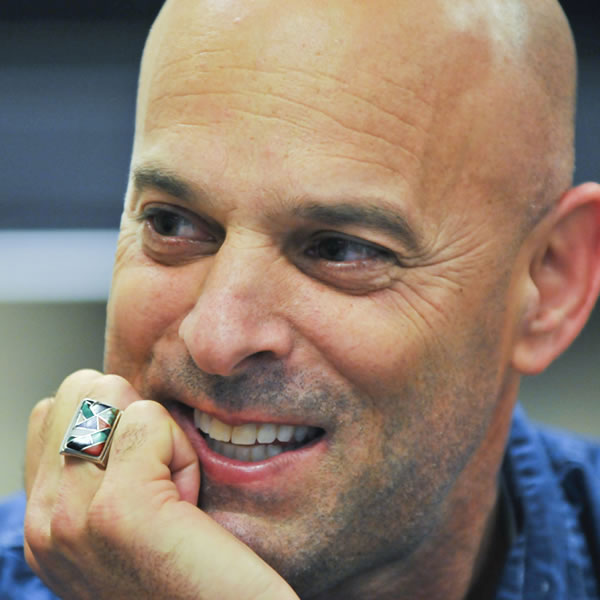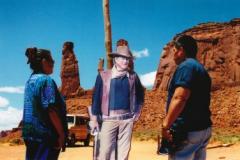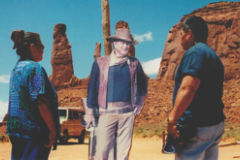
When I began work on this project in 1997 documentaries were intended for a tv screen or a movie screen. in the 1990s all public media was still controlled by gatekeepers at broadcast stations, film festivals and college cinemas. We didn't know if gatekeepers would allow an unheard-of Native American family to reach many audiences. We took a chance by making the entire film from the point of view of humble family. Now we have a different world with internet, youtube, social media platforms and limitless digital platforms popping up and they offer us new possibilities. But the internet and all it's new platforms are all dependent on electricity. So what happens if the grid goes down? What will you do? We need to meet face to face. We have to develop our people skills and our ways of working together toward common goals. I believe that this film brings people together across all the lines that typically divide. I believe that the story is universal and timeless.
Navajo Boy keeps going like a small donkey, crossing all media, 24/7 even entering into Washington policy discussions. This film is a Navajo family story. But all families relate to old pictures and to loss. We have all seen loved ones pass from the scene. But the return of a Navajo Boy shows a dream come true, a loved one coming back into the scene. This family story has helped the Navajo tribe pressure congress to investigate and begin cleaning up a hidden cost of the Cold War: uranium contamination in Native America. It will take decades for this dream to come true. And it takes many people who are willing to return to the scene of an environmental disaster. to face families who live in it.
Perhaps Navajo Boy can keep riding for generations. And connecting people. Thanks to the Int'l Uranium Film Festival and its courageous founders, Marcia and Norbert, people can find Navajo Boy in Helsinki, India, Brazil and many other countries. Our dream is to keep Navajo Boy's journey going. We hope you will share this story with students, teachers, environmental activists and senior citizens. People remember stories. People feel motivated to work together when they begin to share their stories. This story shows a chain reaction, a series of unexpected human events that surprised us all. We didn't see it coming. I started filming the journey in 1997 with images from an old forgotten movie and a focus on a strange cross cultural encounter.The events that unfolded from that encounter changed our lives. We all continue to work together. Children in our film are now adults with their own children. Everyone involved in Navajo Boy feels a family connection and a personal connection to those who watch it, especially those who carry it to others, like Norbert and Marcia. They are amazing. [The Return Of Navajo Boy Epilogue]
We never anticipated this film going so far. Who knew? In the Epilogue you can see how this film and one determined Navajo grandmother move mountains. We created a groundswell of interest in this story. We hope you will share your comments with all of us on Facebook (The Return of Navajo Boy has a page) or you can send your comments to us via email if you would like us to post your response on our website. Your reactions, feelings, thoughts do matter to us. People in the Navajo Nation and in communities all across the globe are able to meet each other in this way. Don't be shy. Share your thoughts with us. Thank you, Marcia and Norbert, for bringing Navajo Boy to Brazil and beyond."
Jeff Spitz, Chicago, Illinois






